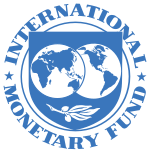|
|
| International Conferences /Seminars |
|
|
|
|
|
|
|
|
|
|
|
|
|
|
|
|
|
World Political Cleavages and Inequality Database
The World Political Cleavages and Inequality Database (WPID): The World Political Cleavages and Inequality Database (WPID) is a global research initiative involving around twenty researchers, offering an extensive dataset on political cleavages and social inequalities in electoral democracies since the mid-20th century. It relies on harmonized electoral surveys from plural elections, capturing voters electoral behaviors and socioeconomic characteristics, such as income, education, occupation, gender, age, national origin, and ethnoreligious identity. Despite some imperfections, these surveys are a vital resource for studying the interplay between political cleavages and social inequalities....
|
|
|
|
|
|
|
Target price accuracy of sell-side analysts: evidence from India by Kadam, S., & Sethi, M.
|
|
Cogent Economics & Finance, November 2024
|
|
Target prices forecasted by sell-side equity research analysts play a crucial role in market participants’ investment decisions. We, using a large sample for Indian markets, determine during the period and end of the period 12-month ahead target price achievements, examine the effectiveness of valuation methods for....
|
|
|
|
|
|
|
|
A Quantile Dependence among Exchange Rate, Stock Prices and Oil Prices: An Empirical Evidence from India by Aldawsari, Salem Hamad, et al.
|
|
Annals of Financial Economics, November 2024
|
|
This study investigates the dynamic relationship between exchange rates, oil prices, and stock prices in the Indian market, considering bearish, bullish, and neutral market states. By utilizing the Quantile ARDL method, we explore long- and short-run relationships in differing market states. The variations in sensitivities of oil....
|
|
|
|
Illicit gains and state capture: Political party extortion in India and Pakistan by Siddiqui, N., Stommes, D., & Waseem, Z.
|
|
World Development, November 2024
|
|
Political parties engage in extortion across the developing world. However, discussion of this phenomenon is largely absent from existing research. Drawing upon hundreds of in-depth interviews with local political party leaders, bureaucrats, journalists, and the police in regions of India and Pakistan....
|
|
|
|
|
|
|
|
|
|
|
|
|
|
|
|
|
|
|
|
|
|
|
|
|
|
|
|
|
|
|
|
|
|
|
|
|
|
|
2019-2024 @ Indira Gandhi Institute of Development Research - Library
|
|
|
Reach us: |
 lib@igidr.ac.in
lib@igidr.ac.in
|
 022- 69096504/563
022- 69096504/563
|
|
|
Disclaimer: Copyrights of images/videos/links/content used on this page belong to respective publishers/websites, and are used only for disseminating information for academic and research purposes. If anyone has objections, may please contact us at the above mentioned email address
Unsubscribe
|
|
|












